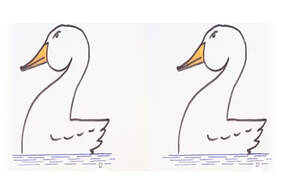 2 Impactful waves
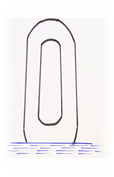 Hanging on…Zero gains? Declutter – make space for the new and constructive… Not ‘technology’! Not ‘content’! We have enough of both for now. How about a strong focus on learning experiences instead? Review ‘campus’: Do you really want your education to be defined by the long-term physical structure around you? What happens if you think of the place called ‘online’ as a social and professional community of learning… 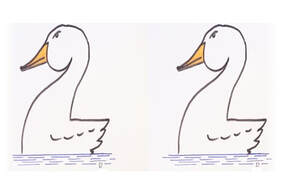 Perspectives Learners: We know the future is different from the past, but in 2022 it’s even harder to see the pathways. Deploy your education to prepare for long productive lives in great social and economic uncertainty. Grasp the way forward. Learn differently to go your own way - live and contribute. Teachers: Researchers and lecturers are the most passionate and knowledgeable people on the planet. Look what they did in a crisis! You have the power to truly transform education in 2022. If not now, then when? 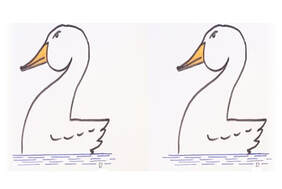 Initiatives Find your future. Think future first. Involve everyone. Define it, model it and move the vision forward. What could go your way? Find new collaborators. Climb out of your box and take a wider perspective. Have a global jam? Make your choices. Line up your ducks. Quack loudly. Swim forward fast with others in 2022. Gilly Salmon January 2022.
Thanks to Rod Angood for the duck images. www.gillysalmon.com
38 Comments
Title: Bouncing back: bouncing forward
Purpose: To help you and others adapt and cope with studying during the pandemic (and afterwards) , explore some resources, helping each other and tips to deal with studying pressures. Task Summary: You will explore some individual and groups ideas for actions and discuss with others. Spark: www.youtube.com/watch?v=L1XmVCqOYn8 This video offers tips for students to rapidly adapt to learning online- whilst maintaining health. Individual Contribution: Choose one of the following 1. Identify and focus on what is most important for your course. Make a ‘poster’ for your wall in your study space! 2. Identify your realistic goals for this week. Note and diary small steps. 3. Communicate with your tutor, ask a question or ask for help. Be specific on what you need now. 4. Identify and then ask someone else for help for something you need to help you study – could be course related, some feedback or delegation of an everyday task to free up your time. 5. Plan your study routine for next week. Get a new diary or make your own reminder ‘poster’. Make it big and put it on your wall or window to help you focus- (bigger than 'post its!) Post in the bulletin board which one of these you will focus on over the next few days. Think about at least one action and when you will do it. Then do it. Post by tomorrow 11am please. Participation: Find an additional resource related to maintaining your health whilst also achieving your studies in rapidly changing situations. The resource might be a tool, a blog, a video, a quote or saying. Post it in the group 'Resilience' wiki <link> saying why it helps you. Get together online in your group of 4 and share your resources and discuss how they might help everyone. Post a summary (200 words maximum) in the wiki’ along with links to the resources. Complete your group work by Friday 6 pm please E-Moderators Intervention: I will look at your wiki on Friday evening, give feedback and additional suggestions Schedule & Time: Watching the spark video needs 8 mins- but take as much time as you need to think about your responses. Say 60 mins? Finding additional resources shouldn’t take too long – but be creative- maybe another 60 mins? Then organising your group work discussing and posting- could be another 2 hours. So, it’s around up to 4 hours spaced out whenever you can during the week- but what an investment into your resilience! Next: Maybe re-watch the video. Choose another action from the list. Give yourself a safe reward! More resources https://ideasreport.com/2020/watch/ https://resiliencetoolkit.org.uk/wp-content/uploads/2018/01/think-journey-tool-guidance.pdf http://www.thefridge.org.au/home2 https://www.youtube.com/watch?v=L1XmVCqOYn8 LINKS Professor Gilly Salmon's Website Education Alchemists Services E-tivities assist with peer learning, build effective learning pods and co-operation, and lead students towards exploring challenging issues together. It’s always worth encouraging them to diagram and visualise outcomes from their collaborative discussions – helping them to mature as learners and present complex ideas better. TITLE: How to win a Nobel prize. PURPOSE: How to win the Nobel Prize. (Also helps with your first assignment). SPARK: https://www.nobelprize.org/prizes/lists/nobel-prize-awarded-women/
https://www.bbc.co.uk/news/science-environment-54432589#:~:text=Emmanuelle%20Charpentier%20and%20Jennifer%20Doudna,DNA%20contained%20in%20living%20cells. INDIVIDUAL : Explore the awarding, to two women scientists, of the 2020 Nobel Prize in Chemistry. They developed the tools to edit DNA. Explore a bit further, find out how Nobel prizes are awarded. Find out the demographics of Nobel prizes generally. Pick one characteristic & post in the forum <link> the statistics you have found about it & one piece of valid evidence offering an explanation (150 words max plus your reference(s)). Post by Monday at 16.00 GMT. PARTICIPATION 1. Respond to at least 3 others of your peers by agreeing or disagreeing (with evidence) about their accounts or interpretations. Complete by Wednesday 16.00 GMT. 2. Meet in your groups of 4 , draw a multiple cause diagram demonstrating why there are inequalities in the awarding of Nobel prizes https://www.futurelearn.com/courses/systems-thinking-complexity/0/steps/20381. Add this to your e -portfolio ready for your assignment. And post in your <Group drive>, alerting me when it’s there. Complete by Friday 16.00 GMT., latest. INTERVENTIONS: I will give feedback on your multiple cause diagrams, Friday to Monday. SCHEDULE & TIME: 2 hours exploring Nobel prizes, the rules, the history & the statistics. At least another hour choosing one demographical element & looking at evidence for explanations or make your interpretations. 60 mins reading classmates' contributions & responding. 2 hours in your groups reminding yourselves about multiple causes in complex systems & developing an excellent diagram & posting it for review. 30 mins reading my feedback & thinking about it for your assignment. Total: Around 5.5 hours spread over one week. Your whole career to try and get a Nobel prize.  I’m speaking at the Learnovation Summit on 14th October and was interviewed prior to the conference. Learnovation is organised by ‘The Learnovate Centre’, a leading research and innovation centre in learning technologies, based at Trinity College, Dublin. I thought you might like to read the interview. I was asked about whether the dominance of the college or university campus is likely to return - as the world’s most traditional universities adapt for different futures. And I was asked whether institutions have opportunities to ensure students will continue to experience a ‘rite of passage’ - by increasing online collaboration and peer-to-peer interaction through their studies. The original was written by Martha Kearns, from StoryLab Professor Salmon is the founder and CEO of Education Alchemists and spent 30 years in the university sector in the UK and Australia holding various academic and senior positions including Pro Vice-Chancellor (Education). She says: “I don’t think we will be going back to the dominance of campus; some of the very high-end, research-based, traditional universities across the UK are preparing for sustainability and impact of online. The ‘new normal’ looks different but the focus should be on increased flexibility so that students can go to campus if it is safe and appropriate, but they are offered equivalent experiences if that’s not possible. This might not be the last time this happens so we need increased flexibility for the future and the ability to switch, in an agile way, between one mode and another. “The concept of ‘going’ to university is completely embedded in our cultures. Students see it as a ‘rite of passage’; a moment of freedom - to explore and find new ways. Universities and students will have to work even harder to enable people to make cross-cultural connections and understand the world of the future through their digital learning, rather than only by immersion in the university campus through place based encounters and ‘chance’. “To provide such experiences we have to embrace the idea of the ‘university in your pocket’ : all the components of university life can occur through digital and mobile. So, students carry their university or college with them rather than going to a campus! But they need to have all the features that a physical campus would have – places to meet socially, places to listen to and engage with their lecturer and, crucially, places to work with other students. “Already there has been a been a marked increase of attempts to bring courses completely online and take them out to the world because of the importance in Europe of overseas students. We’ve probably seen the halcyon days of being able to import students to our campuses. Instead, we can export learning out to where they are. That has been going on for a while but there will be a major ramp up in trying to reach students that are not located in our countries in a range of new, digital ways.” Professor Salmon adds that people across the corporate and the university world stepped up massively during the worst part of Covid but now it is time to learn, reflect, design and re-think the future. “It might take a bit of time and I am sure this academic year will still be very disruptive and will not meet some expectations. But we should be hopeful that this is the moment of pivot; our opportunity to change to something that is successful for all. There are many advantages to moving online. It is more equitable for everyone and saves time as well. So, it’s not all bad, it’s different.” Other speakers at the Summit were also interviewed on this topic: The Learnovate Centre Director Nessa McEniff said: “There is no doubt that this year’s college experience is very different for students across Ireland. However, we believe this is the perfect time for third-level institutions to embrace the benefits of elearning and see how it can add to the university experience. Online learning has huge advantages for both students and the institutions as it increases equity across the student body and universities can increase their offerings to students in Ireland and elsewhere.” Learnovate Academic Director and Director of Research at Trinity College Dublin, Dr Ann Devitt said: “In all the changes that we have had to make in our lives and our education settings over the last few months, sometimes the procedural aspects of learning have been to the fore – getting people into school or online, getting materials online and so on. But we don’t know how long this situation is going to last so we must make sure that those things that make us human stay at the very centre of what we are trying to achieve in education. We need connection to learn and to keep us motivated. In an online context, it takes imagination and careful consideration to make those happen, but we must be committed to always trying to achieve that.” The Learnovation Summit takes place on October 13-15, 2020. It's called ‘Living and Learning in a Changing Workplace’, this year’s Learnovation event focuses on how to transform learning experiences for employees, students and customers in online learning’s biggest year ever. My talk is entitled ‘Seizing the Pivot for New Learning: pursuing principles and practice post-Covid’. I will explore achievable ways of imagining and implementing the best learning concepts for the ‘new normal’, ranging from design, equivalence, scaffolding, engagement and learning futures. LINKS Professor Gilly Salmon's Website Education Alchemists Services Learnovation Summit 2020 The purpose of the E-tivities Framework is to enable academics, learning developers and teachers of all kinds to design for active, engaged online participation for their students. E-tivities provide examples of learner-centred ways of together remotely. Set up one to try out for yourself today! Invent your own:
Try out this one: Title: You have 80 years to solve this problem Purpose: Practise data interrogation, extrapolation, reflection and ‘big picture thinking’. Practise preparing presentations and receiving feedback. These skills will help you throughout your course. Task Summary: Working together in groups of 6, you will explore a report on global capacity to accommodate a growing population, develop an action list for the world, and advise your university of the most important curricula to save the world. Ok?! Spark: Global population is expected to rise from today’s 7 billion to 11.2 billion by the end of this century. Consider the information at ‘Half of the world’s habitable land is used for agriculture’ www.ourworldindata.org/global-land-for-agriculture Individual contribution: Individually, assess the data and metrics presented. Identify and post <wiki link> two of your proposed most significant interventions. Complete by 5 pm on Monday evening. Participation 1: Meet on or offline in your groups and review the individual work. By consensus, build an agreed priority list for what job roles, skills and knowledge might be the most important to tackle these kinds of complex adaptive systemic problems. Create a short video together (5 mins max) and post in the wiki. Complete by 5 pm Thursday please. Participation 2: Choose one other group and ask them to review your video. Listen carefully to their feedback. Offer meaningful supportive feedback to theirs. Improve your videos Moderator Intervention: I’ll come in on Sunday and give my feedback and additional resources. Schedule & Time: Individual work: from 1 hour. Group work to presentation, from 3 hours. Receiving feedback presentation and discussing in your group, 2 hours. Improving video, 1 hour. Posting your thoughts and resources in the wiki, 1 hour. Considering my feedback. 1 hour. A total of 9+ hours spread over about a week. Keep building on the wiki. LINKS: More about E-tivities Professor Gilly Salmon's website Education Alchemists Services : workshops on e-tivities for all E-tivities book available on Amazon E-tivities are frameworks for enabling at least two people, and usually many more, to work and learn together remotely. The more diverse the participants, the better e-tivities work. E-tivities use the accessible features of your institutional or corporate VLE/LMS - no new technology needed! Why not give one a try today? Set it up yourself or perhaps ask a student for help. Invent your own:
or... Try out this one: (Please let me know if you try this and how it went with your students. or have you got any successful e-tivities to share?) Title: Have you met the real Santa Claus? Purpose: Exploring scientific knowledge and methods Task Summary: A chance for an important philosophical and scientific discussion – for your chosen subject. No marks but might change your life, or at least you might meet someone new, interested in your subject. Spark: Take a deep breath (it’s fast) and watch this youtube video Watch it again if you need to! Individual contribution: What surprised you? What did you know before? Can you think of anything that changed your mind about your subject? Try and articulate why. 100 words max per posting. Complete by Friday please. <link to pre prepared forum> Participation: Over the weekend, think about at least three postings by your peers. Indicate what you think they are hypothesizing and whether you think these could be proved or disproved and how – post your response. Max 100 words per reply. Post another short video or article if you can find one to support your views. But keep discussing after that. Can you spot people with views like yours, or completely different? Moderator Intervention: I’ll come in on Monday and give feedback Schedule & Time: Around 90 mins spread over 2 or 3 sessions. More if you’d like to have a Zoom discussion with each other. 30 minutes or so to read my summary and think about the relevance of scientific methods for your course this semester. LINKS: More about E-tivities Professor Gilly Salmon's website Education Alchemists Services : workshops on e-tivities for all E-tivities book available on Amazon E-tivities are frameworks for enabling active and participative online learning. They enable purposefulness and promote remote learning together. The framework is very well researched and hence is evidence based. You can use E-tivities with confidence across all disciplines and professions to provide purposeful connections for all learners. E-tivities used your institutional or corporate VLE/LMS that everyone has access (no new technology needed). Why not give one a try today? Set it up yourself or perhaps ask a student to. Invent your own:
or, try out this one: Title: A million miles an hour? Really? Purpose: Explore tools to succeed & get to know your peers. Task Summary: Watch the video- do some thinking, and offer support and encouragement to your classmates Spark: Watch this YouTube video (At 3 minutes, it appears to finish- but keep going, there’s more) Individual contribution: Do you agree Brian Cox is being ‘pedantic’ ? Post a thought or two about how you feel about uncertainty in the world. Does the video make you feel unique, determined to succeed, or find it worrying? (100 words max per posting). Complete by Wednesday please. <add a link to your forum on your VLE> Participation: Come back in a couple of days and add encouragement or empathy to others. And post something new you’ve found encouraging about dealing with uncertainty. Intervention: I’ll come in Sunday and give feedback and more ideas. Schedule & Time: Around 60 mins spread over 2 or 3 sessions. More if you’d like to share the video with others. 30 minutes or so to read my summary. LINKS: More about E-tivities Professor Gilly Salmon's website Education Alchemists Services : workshops on e-tivities for all E-tivities book available on Amazon It’s a great joy to me that, during these ‘challenging times’, many educators are exploring learning design ideas. And appreciating that providing successful, enjoyable, engaging pathways for digital learning environments, is best worked out before the students arrive. My preferred way of undertaking this planning is through Carpe Diem co-design (www.gillysalmon.com/carpe-diem) and using research- to- practice academic concepts (www.gillysalmon.com/e-tivities). I’m discovering that academics value some reminders of the key notions of practical design frameworks. Many creative tools are well known; a few are new. I’ve put some references below which have helped me and many participants in Carpe Diem workshops. These assist with building confidence and determination of directions and actions – sometimes rare commodities in rapidly changing situations. And hence, support mindful, equitable, viable, and purposeful digitalisation of learning and teaching. It is important to know where you ‘are’ in the design process. Avoid starting with ‘the solution’ but with considerations of the many ways in which the opportunity could be thought about. Get some ‘divergence’ into your thinking, and then ‘converge’ on your optimal viable way forward. Focus down to an appropriate, collective ‘Point of View’ if you can about the opportunity. Then diverge your considerations of possible resolutions before converging on your best plan(s) to meet the situation, given your time and resources. So, for example, the divergence might be to explore a wide range of ways to respond to students unable to attend campus. And then, converging on the preferred resolutions by creating a pedagogical journey through a storyboard. This concept is usually drawn as two consecutive diamonds like so: You will have noticed that moving from the dominance of place- based learning to exploring the potential of digital environments is complex! For more complicated challenges, wider thinking assists in developing better understanding and more choices. It’s best done with a small team of people with differing perspectives. So, for Carpe Diem methodologies, we add aspects of ‘systems thinking’ to our fusion, such as multiple stakeholders and visualisations to increase our creativity. In situations of rapid change in the wide world of work and research, we need still more in the mix. Key questions might remain: how to explore possible futures for the graduates of our learning programmes? How can we prepare them better for their long learning lives? Who will benefit – can advantages be broader and more equitable? How can we make our education programmes more relevant over time, not less? We can explore data of all kinds. We can map visions to potentials. But the core of our design thinking needs to lead to tangible constructions of learning pathways. Have a try…
Group engagement based on design processes cross borders and boundaries and enthuse different disciplinary cultures and professions. They are almost universal in their ability to engage, and likely to benefit future students. Recent international practice in workshops deploying these design concepts has engendered confidence in and involvement by participants. Please explore and become a designer of the future! References. Visual Director for Education Alchemists, Rod Angood, YouTube Video https://www.youtube.com/watch?v=Dn6piCH5d6g&t=69s Brand, W. (2019). Visual Thinking. Amsterdam: BIS Publishers. Hall, E. (2018) The 9 Rules of Design Research. Blog aimed at business; an interesting perspective. https://medium.com/mule-design/the-9-rules-of-design-research-1a273fdd1d3b Lewrick, M., Link, P.,& Leifer.(2018).The design thinking playbook: Mindful digital transformation of team, products, services and ecosystems. Hoboken: Wiley Roam, D. (2016) Draw to Win. (2016). Penguin. Agile Learning Design: Post Covid. Major change has been a constant throughout higher education in the last 50 years. The drivers of learning and teaching innovation and development are super-complex. Hence a high level of resilience is needed to transform modes of learning and teaching, even with the best of wills, whilst maintaining purpose, reputation, and missions. During the first decade of the 21st Century, there was widespread investment in and adoption of learning platforms, such as Virtual Learning Environments (VLEs, sometimes called Learning Management Systems, LMSs). By the second decade of the century, it was recognised that the digital revolution was impacting rather more slowly on education compared to other sectors…evolutionary rather than revolutionary. There was a passionate intent to improve quality and equity, to reach more learners at lower cost, as well as to education them better. There was a gradual move to recognising that embracing learning technology is fruitless on its own. It needs good learning design, strong evidence-based pedagogical input, and the sensitive handling of delivery by online tutors. Then the 3rd decade arrived and brought with it the extraordinary challenge. In 2020, the Covid-19 pandemic injected a rocket into the careful, well-rehearsed, campus-focused, and historic ways of teaching. Technology platform providers immediately made increased virtual space and affordances available. Academic staff stepped up to their computers on a massive and impressive scale. Everyone used all their energy and creativity to problem-solve. Super rapid training and development was offered and taken up. However, as I write, 5 months after this began, the University sector (and many other education, development and training sectors) are regrouping in order to sustain remoteness where necessary and appropriate, but also to enable flexibility, quality and full learner engagement for the next steps. Most are recognising they cannot ‘reengineer the aircraft’ in flight. So, they are looking to ‘jump over’ and carry with them the successes and failures that have gone before. Most are sensibly looking for clues from those who were able to work through this in slower times. For me, learning design is one good way of jumping over and in. Clearly this needs to be done in collaborative co-design ways, for acceptability with speed. And ensure the models and frameworks in play are well rehearsed, offer opportunities for creative thinking and practice, and can be fully contextualised. At this early stage, it’s best in my view to use the existing VLE/LMS (safer, well supported platforms) and keep the focus on the pedagogical transformation to flexible, engaged student-centred learning. Can it be done in time- for September 20; or for January 21? Of course, it can. Take a breath, then Jump In. The changes will meet maximum flexibility with quality education, and fast. It’s a good test tactic to inform your 2021 strategies. May even lead to desirable pathways to create your preferred futures. If you’d like to try a 10 hours entirely digital workshop to transform 10 modules, get in touch right away! CONTACT [email protected] mob: +44 (0)7526730595 |
AuthorGilly Salmon Archives
January 2022
Categories |
Education Alchemists

This work is licensed under a Creative Commons Attribution-NonCommercial-ShareAlike 4.0 International License.

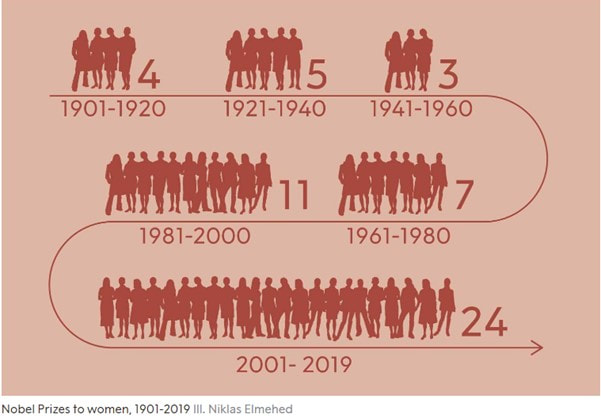
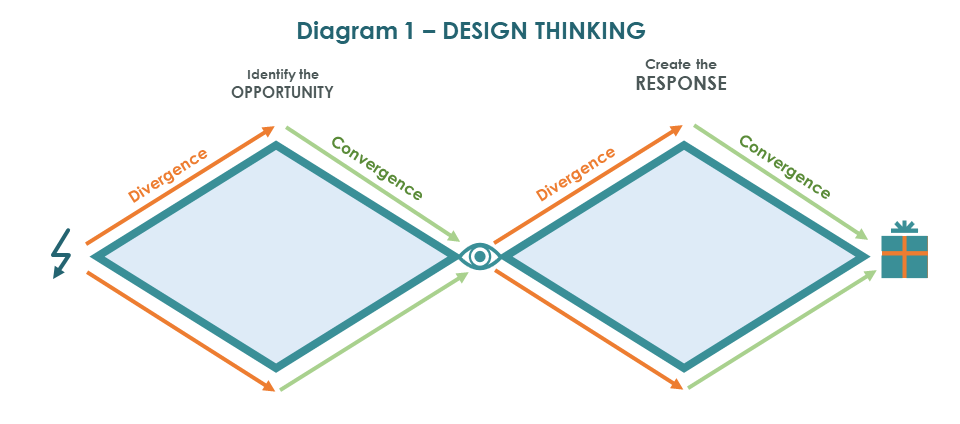
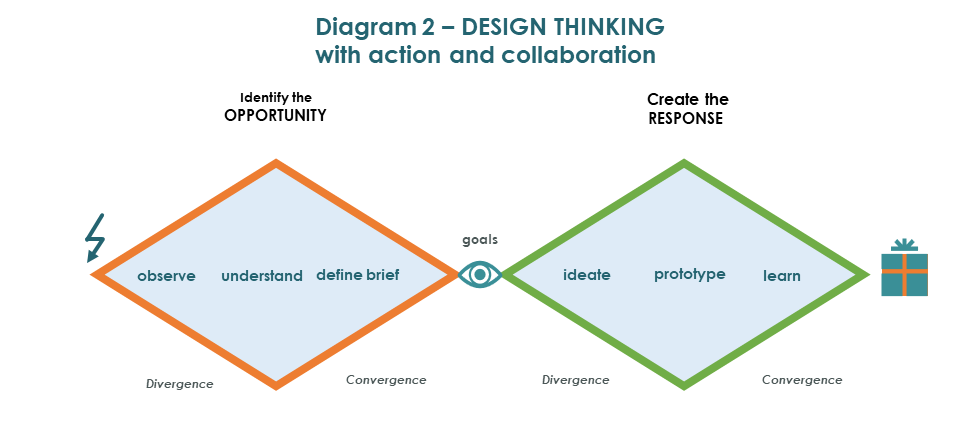
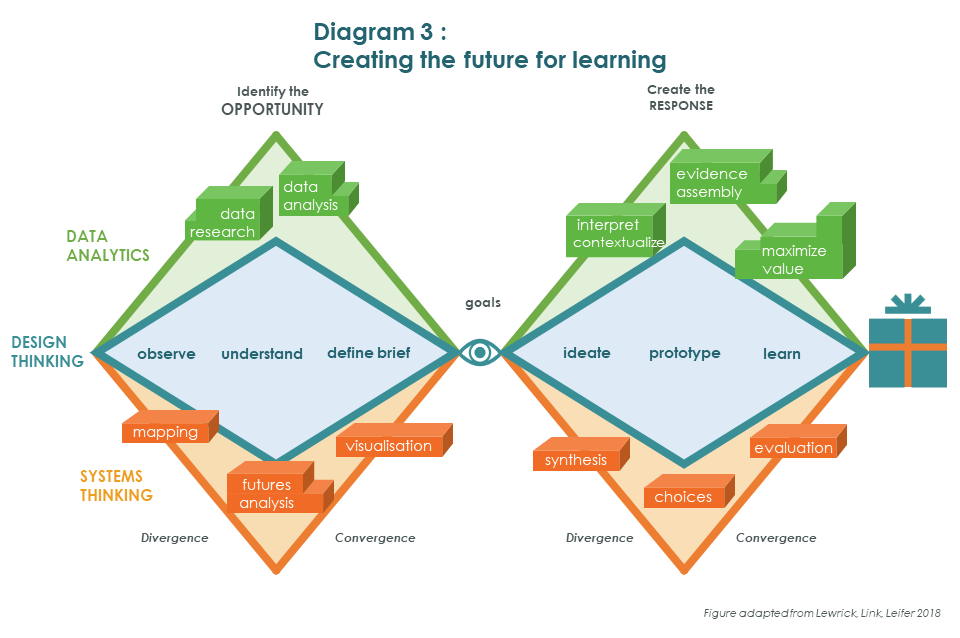

 RSS Feed
RSS Feed